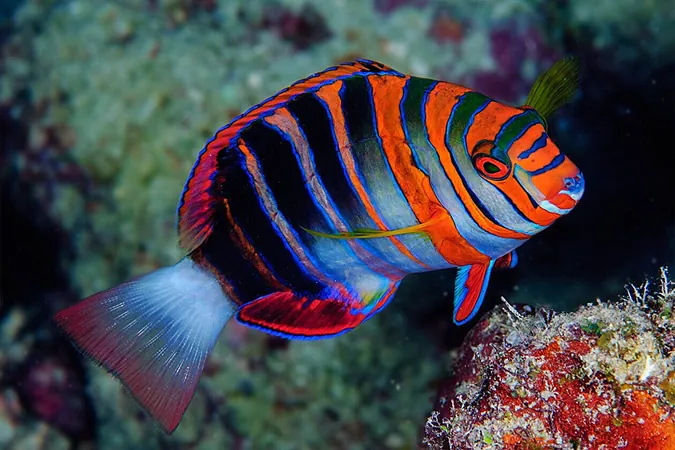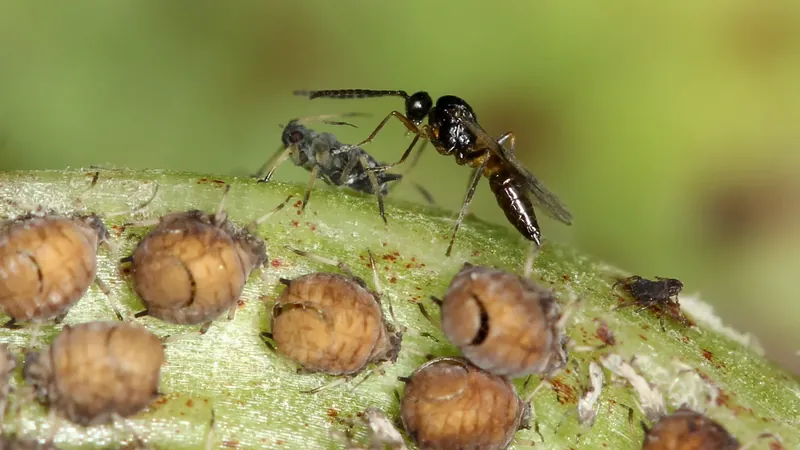
Unveiling the Secrets of Coral Reef Fish Evolution: A Stunning Discovery
2025-05-08
Author: Siti
Coral Reefs: The Oceans' Biodiversity Hotspots
Earth's oceans are teeming with life, but the real treasure lies within coral reefs—those vibrant underwater worlds that are home to an astounding array of marine species.
A Yale Study That Changes Everything
A groundbreaking study from Yale University has revealed unprecedented insights into how coral reef fishes, particularly wrasses and parrotfishes, have evolved. This research shines a light on the explosive burst of species diversification that took place around 20 million years ago among these colorful fishes, numbering over 650 different species.
Lead author Chase D. Brownstein explains, "We saw multiple lineages of wrasses and parrotfishes rapidly diversifying, driven by simultaneous evolutionary events occurring across their evolutionary tree. These events correlate with significant transformations in the coral reef ecosystems they inhabit."
A Deep Dive into Evolutionary Timing
Published in the prestigious journal Science Advances, this study employed genomic data from almost 400 species of wrasses and parrotfishes. By meticulously analyzing fossil specimens, the researchers constructed a detailed evolutionary timeline that pinpointed when this rapid diversification started.
Co-author Luiz Rocha, a renowned ichthyology curator at the California Academy of Sciences, notes the importance of collaborative efforts among natural history museums to achieve this comprehensive analysis. "It was a collective endeavor that provided the breadth of data necessary to uncover the deep evolutionary ties between these fishes."
Seeking the Catalyst for Change
While climate variability is usually a catalyst for evolutionary shifts, this peculiar diversification occurred during a period of climatic stability. The researchers sought alternative explanations and found that the common ancestor of these fishes possessed pharyngeal jaws—an extraordinary feature that likely aided their evolutionary success.
Brownstein noted, "We examined other potential ecological traits, but none could account for the rapid diversification we observed. Instead, it appears that the thriving conditions within coral reefs themselves sparked this evolutionary burst."
What Sparked the Evolutionary Fire?
The study emphasizes that only those wrasses and parrotfishes linked to coral reefs experienced this evolutionary boom, while their oceanic counterparts lagged behind. The researchers theorize that dynamic changes in coral structures, including extinctions and turnover, were pivotal in driving the diversification of species.
Uncovering Important Patterns in Biodiversity
The findings underscore a crucial chapter in the history of coral reef ecosystems, coinciding with the emergence of the Indo-Pacific Coral Triangle—strikingly rich in marine biodiversity—during the same period.
Professor Thomas Near from Yale's Faculty of Arts and Sciences emphasizes the broader implications of their research: "Our study sheds light on how Earth’s most diverse marine ecosystems emerged from centuries of subtle changes. Understanding these legacies is crucial for predicting how climate change and human activities will influence these vital biodiversity hotspots in the future."



 Brasil (PT)
Brasil (PT)
 Canada (EN)
Canada (EN)
 Chile (ES)
Chile (ES)
 Česko (CS)
Česko (CS)
 대한민국 (KO)
대한민국 (KO)
 España (ES)
España (ES)
 France (FR)
France (FR)
 Hong Kong (EN)
Hong Kong (EN)
 Italia (IT)
Italia (IT)
 日本 (JA)
日本 (JA)
 Magyarország (HU)
Magyarország (HU)
 Norge (NO)
Norge (NO)
 Polska (PL)
Polska (PL)
 Schweiz (DE)
Schweiz (DE)
 Singapore (EN)
Singapore (EN)
 Sverige (SV)
Sverige (SV)
 Suomi (FI)
Suomi (FI)
 Türkiye (TR)
Türkiye (TR)
 الإمارات العربية المتحدة (AR)
الإمارات العربية المتحدة (AR)